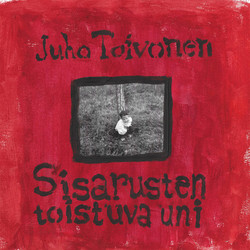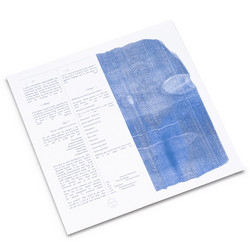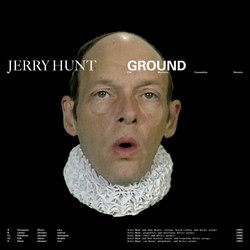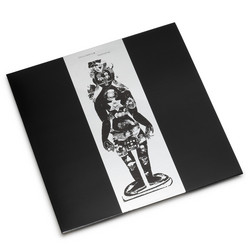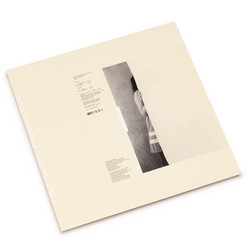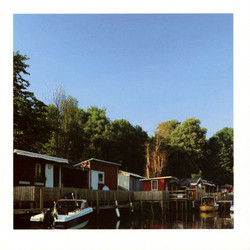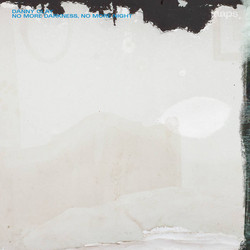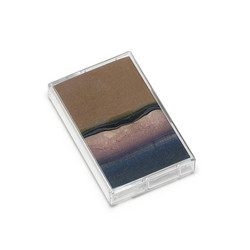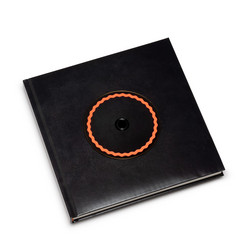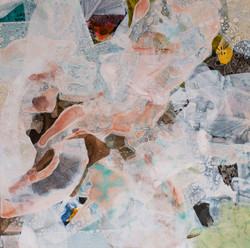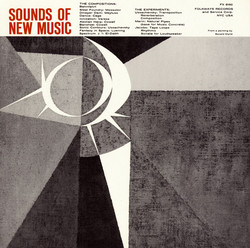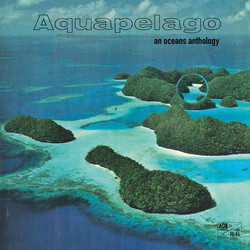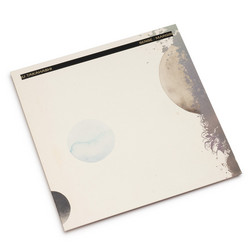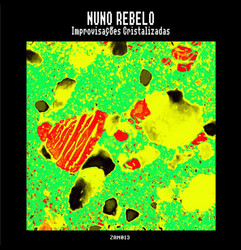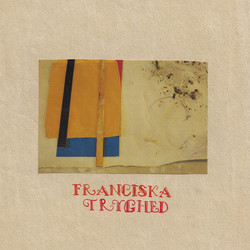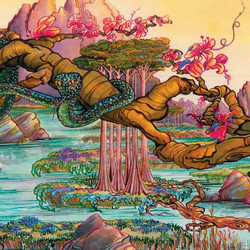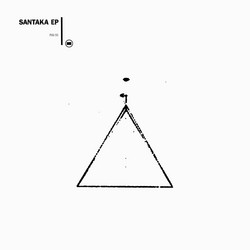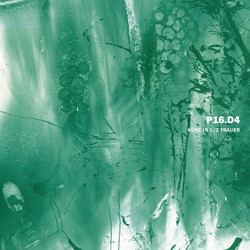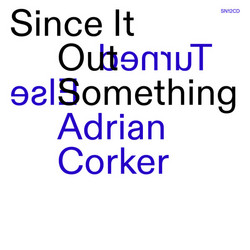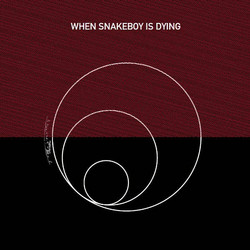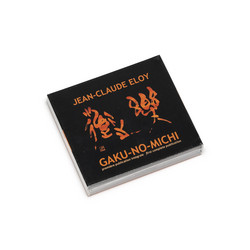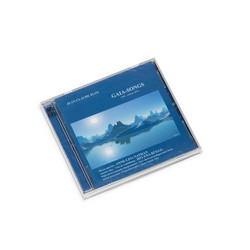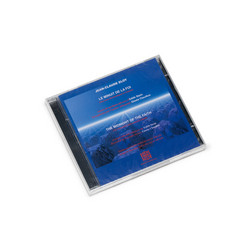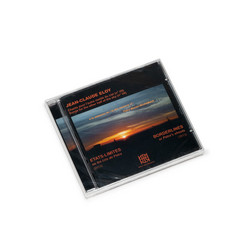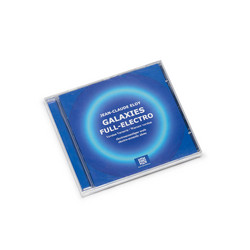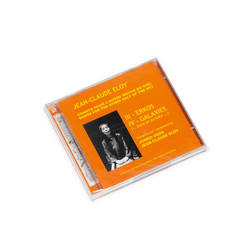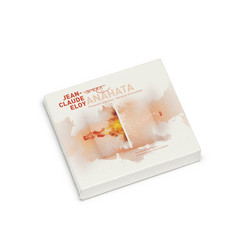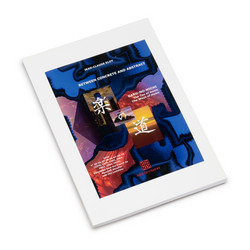File under: Contemporary
One of the Eloy' most essential release 'Kâmakalâ. The Energy Triangle' (1971) for three orchestra ensembles, five chorus ensembles, with three conductors. Orchestra and chorus of the WDR, Schola Cantorum, Stuttgart. Conductors : Michel Tabachnik, Bernhard Kontarsky, Jacques Mercier. Kâmakalâ - a Sankrit term meaning energy triangle - refers to India's philosophy (Tantric Shivaïsm) and is expresses here as the appearance of energy, which is the erotic and cosmic energy (Kama), that which helps Shiva uniting with his Shakti (feminine energy), create every self-subdivision (Kalâ), hence gradually generating the whole complexity of the universe. It is that idea of a vast and slow crescendo of the various parameters of a musical score, of an infinite division and infinite multiplication of the material contained in it that appealed to Eloy. At the time he would complain about a type of contemporary music aesthetics only focusing on the quick scattering of all kinds of points within short periods of time, sometimes in just a few seconds (pointillism). As a result music pieces were almost inevitably bound to be brief, unable to sustain time as it would distribute the entire sound energy from the very first minutes. On the contrary, Eloy wanted to create music in which the energy was sustained, non distributed and reserved to intense inner blossoming at a later point; music expanding very slowly as in Indian Raga, yet Western music definitely modern, atonal and athematic.
'Étude III' (1962) for orchestra, with piano and five percussionists. Orchestra of the SWF, Baden-Baden. Conductor : Ernest Bour. Etude III, which was composed in May and June of 1962 in Zurich and Paris, uses the configuration of a traditional orchestra (wood and brass instruments by pair) opposite to an ensemble of five percussionists, piano, harp and celesta. A dialectic stands out of this opposition as it is emphasized through the writing and conducting (measured for the orchestral mass, a-measured and cued for the entire ensemble on the foreground). The instruments, which form cohesive timber families, come in according to an irregular pattern as the piece develops, with the entire configuration not coming into play until the last developments. The frequent use of very long durations, related to the steadiness of the pitch registers, leads to a rising static sound phenomenon reminiscent of oriental music in some regards: the tone and use of Shô in Japanese Gagaku, the slow and steady increase of complexity in Indian Raga.
'Fluctuante - Immuable' (1977) for full orchestra. New Philharmonic Orchestra from Radio-France. Conductor : Gilbert Amy. Fluctuante-Immuable, which was composed in 1977 as Gaku-no-Michi was produced in the Nippon Hoso Kyokai (NHK) electronic studio in Tokyo, is the result of a commission by the Secretariat of Cultural Affairs made for the Orchestre de Paris, which premiered it in May 1977. This work clearly shows the influence and the alterations that electro-acoustic practices infer on orchestral writing practices. Besides Eloy's long electro-acoustic productions, Fluctuante-Immuable suggested a new (theoretical and practical) way of addressing issues related to composing with notes. The formal issue that the composer faces at the beginning is that of a dialectic between Order and Disorder (or between order and organized chaos) topped by an issue about the relation between the conductor and his orchestra (techniques of synchronization or desynchronization with the mass of musicians).
'Étude III' (1962) for orchestra, with piano and five percussionists. Orchestra of the SWF, Baden-Baden. Conductor : Ernest Bour. Etude III, which was composed in May and June of 1962 in Zurich and Paris, uses the configuration of a traditional orchestra (wood and brass instruments by pair) opposite to an ensemble of five percussionists, piano, harp and celesta. A dialectic stands out of this opposition as it is emphasized through the writing and conducting (measured for the orchestral mass, a-measured and cued for the entire ensemble on the foreground). The instruments, which form cohesive timber families, come in according to an irregular pattern as the piece develops, with the entire configuration not coming into play until the last developments. The frequent use of very long durations, related to the steadiness of the pitch registers, leads to a rising static sound phenomenon reminiscent of oriental music in some regards: the tone and use of Shô in Japanese Gagaku, the slow and steady increase of complexity in Indian Raga.
'Fluctuante - Immuable' (1977) for full orchestra. New Philharmonic Orchestra from Radio-France. Conductor : Gilbert Amy. Fluctuante-Immuable, which was composed in 1977 as Gaku-no-Michi was produced in the Nippon Hoso Kyokai (NHK) electronic studio in Tokyo, is the result of a commission by the Secretariat of Cultural Affairs made for the Orchestre de Paris, which premiered it in May 1977. This work clearly shows the influence and the alterations that electro-acoustic practices infer on orchestral writing practices. Besides Eloy's long electro-acoustic productions, Fluctuante-Immuable suggested a new (theoretical and practical) way of addressing issues related to composing with notes. The formal issue that the composer faces at the beginning is that of a dialectic between Order and Disorder (or between order and organized chaos) topped by an issue about the relation between the conductor and his orchestra (techniques of synchronization or desynchronization with the mass of musicians).
Details
File under: Contemporary
Cat. number: HT 15
Year: 2012
Notes:
Slipcase that includes the jewel box of the cd (with a 28p booklet about the conductors) + a 60p extra booklet.
KÂMAKALÂ (1971)
(Le triangle des énergies)
Pour trois ensembles d'orchestres, cinq groupes de choeurs, avec trois chefs
FLUCTUANTE-IMMUABLE (1977)
Pour grand orchestre
ETUDE III (1962)
Pour orchestre
